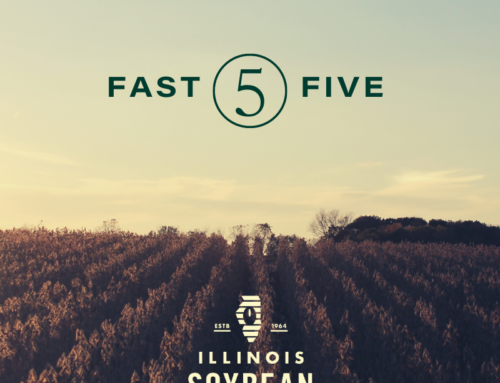September 6, 2022 – Bloomington, IL – Earlier this summer, the Precision Conservation Management (PCM) program released its data summary report for 2015-2021. The report provides clear, objectively analyzed, aggregated, and anonymized results for over 12,000 agricultural fields in Illinois spanning PCM’s full dataset and demonstrating the financial and environmental differences resulting from various tillage, nutrient management, and cover crop practices.
The report outlines five main recommendations for farmers considering a different strategy on page 16 regarding MRTN nitrogen application guidelines, fall-applying nitrogen, tillage and cover crops.
PCM Operations Manager Clay Bess highlights two of those recommendations that he makes to farmers that have been supported by data over the past two to three years: fall nitrogen application timing and tillage passes.
“It’s true that the main benefit of fall applied nitrogen is logistics, but we continue to find that it’s worth developing a plan for spring or in-season applied nitrogen. Fall applied nitrogen has proven to be less efficient than spring or summer applied programs, supporting the fact that nitrogen is lost through the winter, and fall-applied nitrogen can be $20-$30 per acre behind other timing methods,” says Bess.
And on tillage passes, Bess notes that anything more than two passes is not worth the time or money.
“On bean stubble and corn stalks, farmers who perform three or more passes of tillage are seeing a drastic decrease in return per acre,” says Bess. “Yields are dragging, and the additional power costs make the decision to remove at least one of those passes easy and backed by our seven years of data, not to mention the drastic environmental impacts of that third tillage trip.”
“To go one step further, only a quarter of our most profitable corn farmers perform more than one tillage pass, and only one third of our most profitable soybean farmers perform more than one tillage pass.”
Other recommendations from Bess for farmers considering a different strategy:
- Cover crops that die in the winter and don’t need to be terminated in the spring look like the viable option ahead of corn. Not only is it less risky, decomposing for a clean field to plant, but it also shows less yield drag and fewer costs than over wintering ahead of corn.
- On average, cover crops resulted in a two-bushel soybean hit on highly productive soils. So, one strategy for farmers with highly productive soils is to select a field that isn’t reaching its maximum yield potential due to reduced water infiltration, weed pressure, or soil erosion, and try cereal rye ahead of soybean and a cover crop that winter kills (like an oat/radish blend) ahead of corn. The idea is that the cover crop will help with the yield-reducing factors and any yield reduction from the cover crop itself will be minimal.
- PCM Specialists consistently inform nitrogen discussions with farmers around an attempt to reach 1.00 NUE (pounds of nitrogen applied per bushel of corn raised) across the operation and, if the farmer is within range, working with the Maximum Return to Nitrogen to maximize return on the nitrogen purchased. Data supports that the most favorable profits lie within operations at or below 1.00 NUE.
PCM is a farmer service program jointly funded by IL Corn and Illinois Soybean Association to help farmers understand and manage risks associated with adopting new conservation practices with the objective of helping farmers make sound financial decisions. The program evaluates conservation practices both on their impact to the environment and their impact to family farmer profitability.
For more information about PCM and to view the full data summary report, visit www.precisionconservation.org.
The Illinois Soybean Association (ISA) checkoff and membership programs represent more than 43,000 soybean farmers in Illinois. The checkoff funds market development and utilization efforts while the membership program supports the government relations interests of Illinois soybean farmers at the local, state, and national level, through the Illinois Soybean Growers (ISG). ISA upholds the interests of Illinois soybean producers through promotion, advocacy, and education with the vision of becoming a market leader in sustainable soybean production and profitability. For more information, visit the website www.ilsoy.org and www.ilsoygrowers.com.


